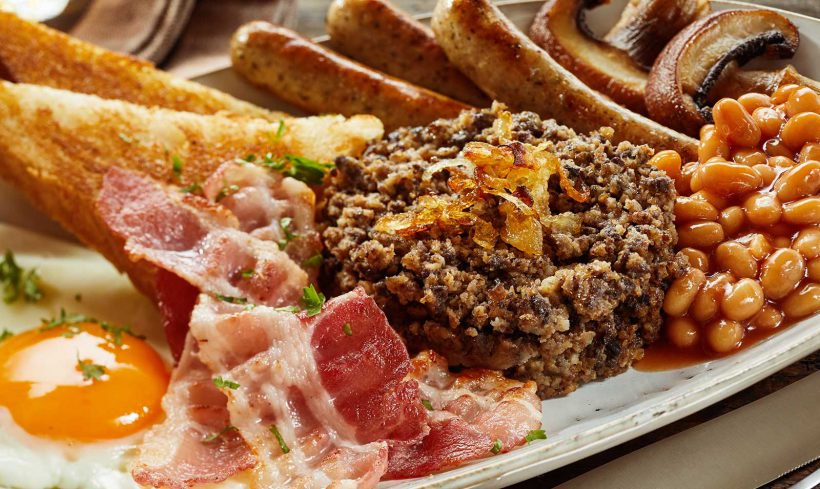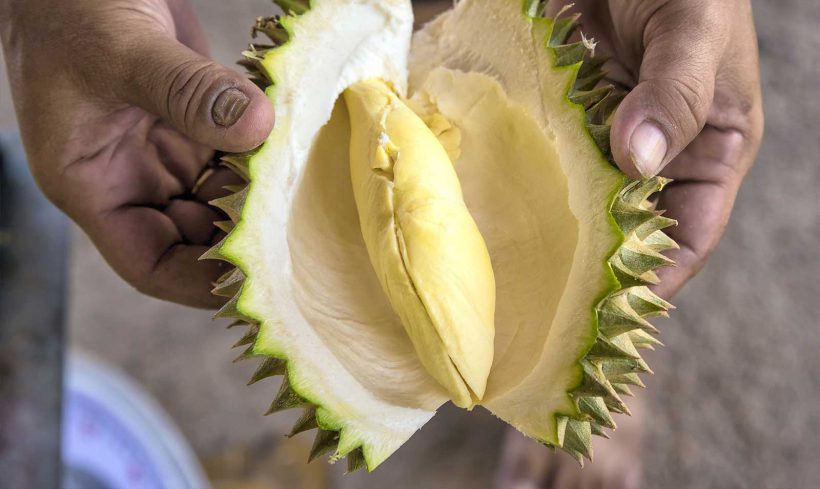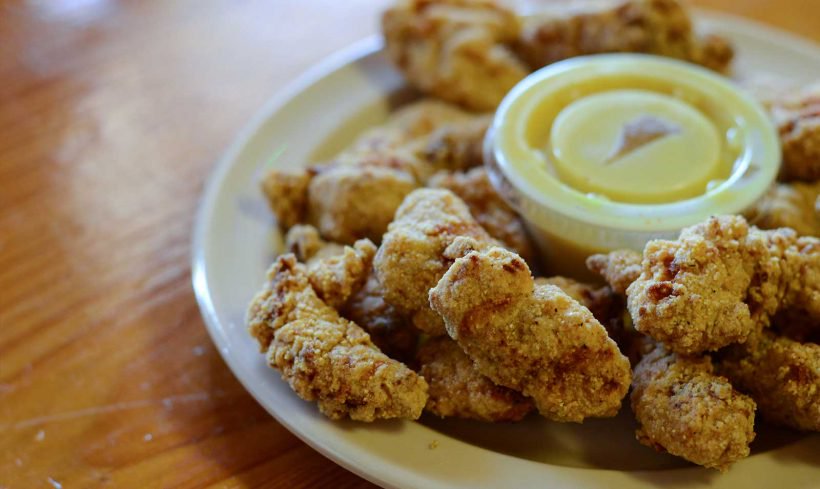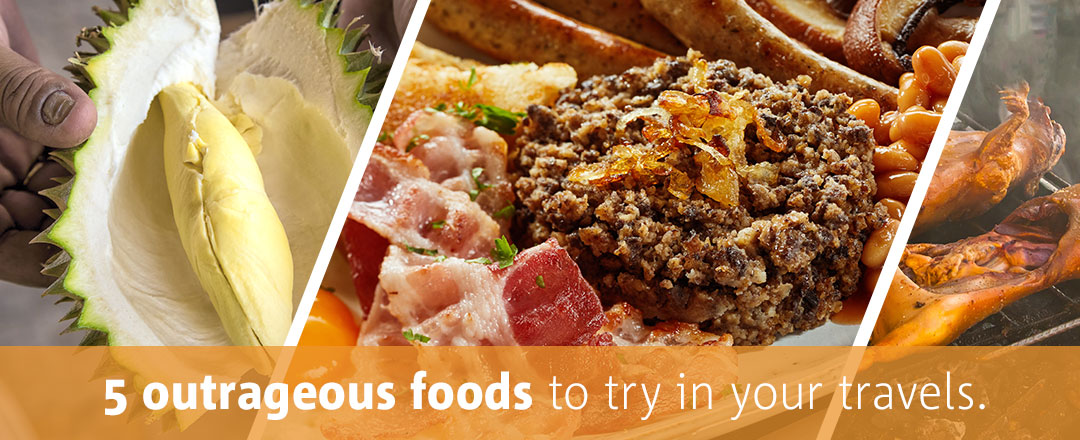When we talk about travel as an adventure, we don’t always mean zip lining or surfing: Some of the most daring travel activities can occur just at the dinner table.
Wherever you go, you might have the opportunity to try a local delicacy. And whether you choose to partake or not, they usually represent something fascinating about that place’s history and culture.
Read about five outrageous foods you should try when you travel (if you dare):
Haggis

Haggis is a Scottish pudding made up of various sheep organs, usually the heart, liver, tongue, and lungs. The organs are minced and mixed with oats, spices and other flavours before being cooked in the animal’s stomach. The meat is scooped out of the stomach and served.
It’s not supposed to taste as crude as it sounds — those who’ve tried haggis have described it as having the flavour of earthy, nutty, spicy oats.
If you’re not into giving haggis a try, though, there are other ways to appreciate its place in Scottish culture: Haggis, the national dish of Scotland, is typically served for Burns Night, a yearly celebration of the birthday of the poet Robert Burns. Traditionally, the Burns poem Address to a Haggis is read as the meal is brought in.
If you don’t like poetry or just really hate haggis, you can celebrate by hurling the haggis as far as you can, an actual sport in Scotland. It’s a more difficult operation than it sounds, as according to the rules, the haggis must be edible after it lands — the skin can’t break apart.
Cuy
You might want to skip this one if you ever had a rodent as a beloved childhood pet. Cuy is cooked guinea pig, a common delicacy in the Andes, where they were first domesticated to be eaten.
Usually cooked whole and eaten from head to toe, Cuy is eaten regularly in Peru and Bolivia, where you’ll see guinea pigs being sold in markets and raised in pens in people’s houses. Because of their small size, they’re popular as livestock, as they take up far less space than cattle, breed quickly, and are a more efficient food source.
In Peru, where over 50 million cuy are consumed each year, cuy holds a cultural significance, and is celebrated in festivals and religious ceremonies. In the main cathedral in Cusco, an 18th-century painting of the Last Supper depicts Jesus and the 12 disciples dining on cuy.
Durian

Durian is a round, thorn-covered fruit grown in southeast Asia. It can be eaten raw but is also incorporated into desserts and candies.
Known for its distinctive odor, durian is a polarizing fruit — those who try it either love it or hate it. Those who love it describe it as sweet and custard-like, while those who hate it use words like “horrid,” “gym socks,” “trash,” and “rotting meat.” No matter how you feel about it, your friends will soon get the chance to smell it as well, as the scent tends to linger on your breath.
Its smell is so persistent that durian is even banned in some public places, including Singapore’s mass transit system. This has also given it sort of a cult following, with American interest in trying it on the rise.
Tête de veau
Tête de veau literally translates to “calf’s head.” It’s typically found in western and southern Europe, and is served as a Christmas dish in Italy.
Described as a tender, soft and delicious meat, the origin of the calf’s head as a meal may have begun with the English celebrating the decapitation of King Charles I in the 17th century. The cheeky observance was then borrowed by the French during the revolution.
The meal still holds cultural significance there: Each year on January 21, the Club de la Tête de Veau in Paris celebrates Louis XVI’s beheading and the dawn of the French Republic with the dish. There are many recipes for Tête de Veau, but the Club celebrates by dining on the whole head.
Fried alligator

They say this one tastes like chicken. Alligator is a delicacy in parts of the southern United States like Louisiana and Florida, where alligator meat comes from farmed animals.
Since it has plenty of protein and is low in fat, it’s considered a healthy meat, with the tail and the back especially coveted as the tastiest portions. However, it’s generally not healthy when it’s cooked, as it’s typically battered and fried.
It does have other uses, though, especially in Cajun cooking, where it’s used as a meat option to make gumbo. Alligator can be as versatile a meat as chicken — it can be roasted, sauteed, or cooked into nuggets.
Skip the restaurants and head straight to the source: Plan a tour to Scotland, Peru, China, France, or North America and introduce your students to brand new flavours!

